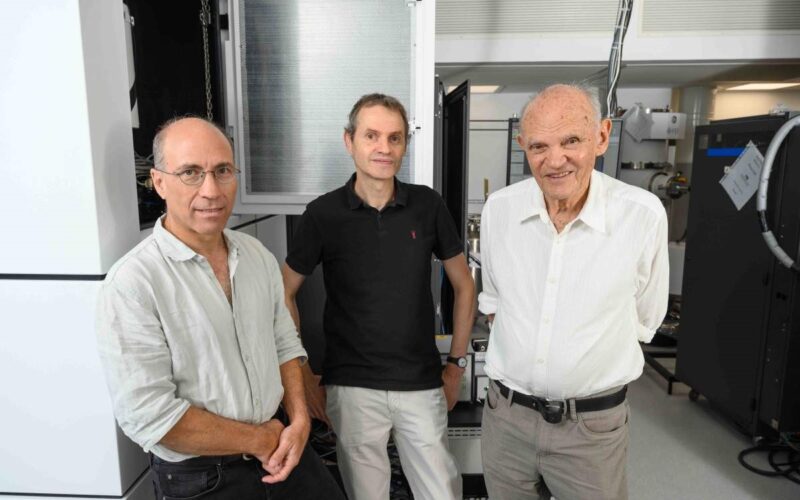
July 22, 2016
Weizmann Institute scientists have revealed how a molecule in the mouse brain can regulate social behaviour. Reported in Nature Neuroscience, the research suggests that a molecule involved in regulating stress in the brain may help determine how willing we are to leave the safety of our social group and strike up new relationships.
In a study performed in mice, the researchers identified a stress mechanism that appears to act as a ‘social switch’ causing mice to either increase interactions with ‘friends’ and ‘acquaintances’ or, in contrast, reduce such interactions and instead seek out strangers. Since an analogous stress system operates in the human brain, the findings suggest that a similar mechanism may regulate how we cope with social challenges. Disruptions in this mechanism may also be responsible for difficulties with social coping in people affected by social anxiety, as well as in autism, schizophrenia and other disorders.
The study, conducted in the laboratory of Professor Alon Chen of Weizmann’s Neurobiology Department, was led by Drs Yair Shemesh and Oren Forkosh.
“Most social contacts involve a certain level of social stress or anxiety, even when we interact with people we know well, for example, during a holiday meal with extended family,” said Dr Shemesh.
“In fact, from the point of view of evolution, moderate levels of social apprehension are essential for safe and successful social engagement.”
According to Professor Chen an individual’s needs may not fit in with the group.
“In social environments, an individual’s interests often clash with the group’s needs and expectations. So the individual must maintain what’s known as a socioemotional balance between the processing of social signals and his or her emotional response to such pressure,” he said.
The scientists used two behavioural setups to study how mice cope with the challenge of interacting with other mice. One was a ‘social maze’ in which a mouse can choose whether to interact through a mesh with familiar mice or with strangers, or even to avoid interaction at all. The other was a special arena, where a group of mice was tracked with video cameras and the observations were analyzed with a computer algorithm created for this purpose. The establishment of this unique setting enabled the researchers to quantify various types of interactions – such as approach, contact, attack or chase – among individual mice within the group for several days.
The results revealed that a molecular mechanism in the mouse brain involved in stress management determines their behaviour toward other mice. The mechanism involves a small signaling molecule, Urocortin-3, and a receptor on the surface of neurons to which this molecule binds. Both Urocortin-3 and the receptor are part of the corticotropin-releasing factor, or CRF system, which plays a central role in coping with stress, and both are prominently expressed in a brain region called the medial amygdala, known to be associated with social behaviour in mice.
Mice that had high levels of Urocortin-3 in the brain actively sought out contacts with new mice behind the net, even ignoring their own group. But when the activity of Urocortin-3 and its receptor was blocked in their brains, the mice chose to socialize mainly within the group, avoiding contacts with the strangers.
Dr Forkosh concluded: “In nature mice live in groups, and the social challenges they face within the group differ from their relationship with intruders. It therefore makes sense for a brain mechanism to produce different types of social coping in these two situations. In humans, this mechanism might be involved whenever we consider moving out of our parents’ home, getting a divorce or changing jobs or apartments.”
Taking part in the study were Mathias Mahn, Sergey Anpilov, Dr. Yehezkel Sztainberg, Sharon Manashirov, Tamar Shlapobersky, Dr. Gili Ezra, Dr. Elaine S. Adler, Dr. Yair J. Ben-Efraim, Shosh Gil, Dr. Sharon Haramati, Prof. Elad Schneidman and Dr. Ofer Yizhar of Weizmann’s Neurobiology Department, Drs. Evan Elliott and Laure Tabouy from Bar-Ilan University’s Faculty of Medicine, Dr. Yael Kuperman from Weizmann’s Veterinary Resources Department and Drs. Julien Dine, Matthias Eder and Jan M. Deussing from the Max Planck Institute of Psychiatry in Munich, Germany.
Dr. Alon Chen’s research is supported by the Henry Chanoch Krenter Institute for Biomedical Imaging and Genomics; the Perlman Family Foundation, founded by Louis L. and Anita M. Perlman; the Irving Bieber, M.D. and Toby Bieber, M.D. Memorial Research Fund; the Adelis Foundation; the Irving I Moskowitz Foundation; the Candice Appleton Family Trust; Mr. and Mrs. Bruno Licht, Brazil; and the Ruhman Family Laboratory for Research in the Neurobiology of Stress.






